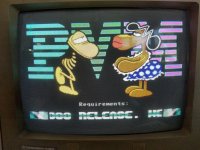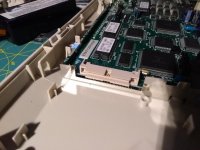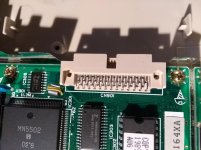Speaking of monitors, I should probably open a new thread about it when I get stuck into actually worrying about it, but mucking with a monitor was yesterday's project and it's raised (well, actually renewed) concerns that the RGB output on my EX might be blown. TL;DR, I opened a thread a while back about a dead Commodore 1084 that I got running by wiring around the switch, but upon connecting it to the EX with a long skinny printer cable found that it appeared that the "Green" line of the RGB port was either not registering at all or was doing so very weakly. Yesterday I built using shielded cable cut from an old KVM cable a short "proper" CGA cable, and the problem still persists. So either the output of the EX is hosed or something's wrong with the input on the 1084.




